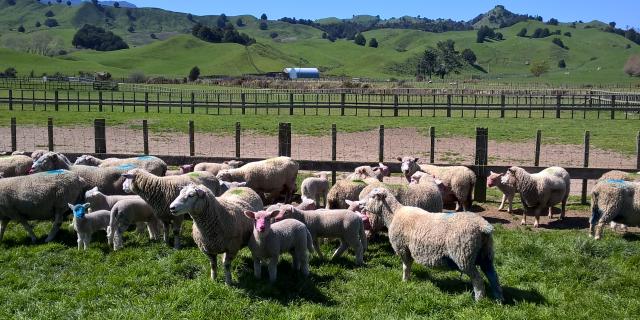Learn about how different farm systems and policies set up different levels of risk – both for worm challenge, and for drench resistance. We also highlight some management ideas and risk mitigations.
Good nutrition is #1
No matter what systems are in place on a farm, very good nutrition greatly reduces the risk of worms to stock. Conversely, farms where underfeeding is a feature, frequently have issues with worms.
The tables below show you the risks, along with suggested mitigations, for worm challenge, and drench resistance in different farm systems.
Sheep breeding with most lambs sold store or grown out elsewhere
Lambs in their first summer/autumn are the biggest multipliers of pasture larval contamination.
Where there are no or few lambs on property to multiply parasites, larval contamination should be low.
Well-fed MA ewes in good condition should not require drench treatments. 2th ewes should be monitored via Faecal egg count at key times (pre-mating, scanning, pre-lamb).
Avoid having remaining lambs rotating around a small area if on grass-only. This can generate a worm ‘hot spot’.
The proportion of total sheep on farm treated regularly is low. Plenty of worms remain in refugia in untreated ewes.
Ensure untreated ewes share grass grazing areas with lambs within the same season.
Sheep breeding and finishing on same feed platform
The small spring peak of worm larvae on pasture is multiplied up by lambs grazing after weaning, even under systems of regular drenching. This leads to a main peak of larvae on pasture in autumn. Much of this can carry through to the next spring.
Prioritise the feeding and body condition of ewes. When these are good, ewes can act as larval ‘vacuum cleaners’. Run light ewes separate to main mob, draft frequently. Learn to body condition score your ewes (PDF, 845 KB). Learn more about the management of ewes in the pre-lamb period here: understanding parasite pressure in ewes over lambing.
28 day/monthly drenching of lambs on permanent pasture is ‘standard’ advice. Lambs on novel forages, long pasture rotations or bred for strong resistance or resilience to parasites may cope with longer drench intervals. Faecal egg count monitoring can help ‘when to drench’ decisions.
Novel forages and new grasses for lambs can lift their growth rates and result in lower worm challenge.
Work on setting up farm system & sheep genotype where ewes don’t require routine drench.
Work on farm system to wean as many heavy lambs as possible to reduce number of ‘lamb days’ on farm after weaning. See this video on optimising lamb growth before weaning. This will reduce the total number of drench treatments given in a season. Worms surviving drench will be outnumbered by ‘good’ worms.
Lambs on novel forages and new grasses should require lower drench inputs, but don’t assume – MONITOR.
Lamb finishing on ‘clean’ feed
Very low worm challenge – grass-free first-graze crops and new pasture sown after a prolonged period in crop.
Moderate – clean grass areas that have had repeated lamb grazings over a number of months. Longer term crops in their second or subsequent seasons. How quickly areas become contaminated is highly variable.
Monitor worm build-up in lambs via faecal egg counting.
High risk: Drenching lambs onto newly-sown pasture. There will be few ‘good’ worm larvae in the sward to dilute out those developing from drench resistant worms.
Low risk: drenching onto crops that will be completely eaten off followed by cultivation and re-sowing.
See the section on multi crops for the safe protocol on managing new grass. Also watch this video on new grass management.
Don’t drench lambs unnecessarily and look for ways to maintain some worms in refugia.
Monitor lambs for worms via faecal egg counts. Generally, don’t drench when they are low.
Lamb trading on permanent pasture only
Permanent pasture becomes very contaminated with larvae over time. An exception may be a winter lamb trade on an area that has run cattle for the rest of the year. Worm challenge in this situation could be low to moderate.
Look for ways to make system more sustainable: running other stock as vacuum cleaners. Growing some ‘clean’ forages.
Regular drench inputs required to sustain production. Worms surviving drench treatments become dominant over time. Refugia is difficult to provide within lamb mobs – untreated animals affected by high worm challenge.
As above. Consider adult ewes as refugia source.
See this article for advice on pre-weaning lamb management and factors to consider before giving a pre-weaning drench.
